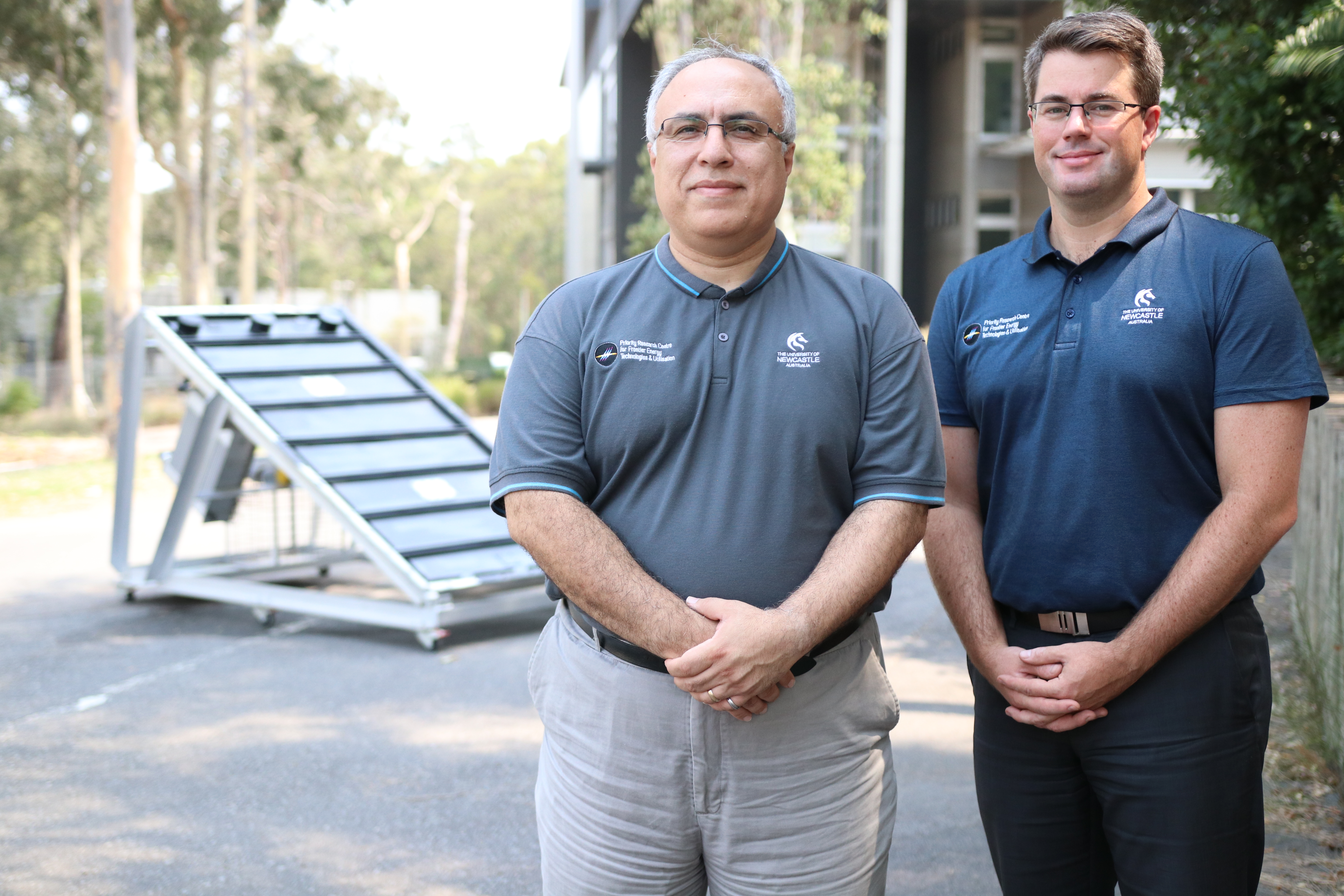Hydro Harvester is making a splash to solve global water shortage
In what could be a game-changer for solving the world’s water shortage problem, an atmospheric water generator (AWG) developed at the University of Newcastle is one step closer to commercialisation.
The Hydro Harvester is designed to extract drinkable water from air at a cost less than five cents per litre.
The project, led by Professor Behdad Moghtaderi, has been awarded $330,000 from the NSW Physical Sciences Fund to prepare the prototype for commercial trial.
From the University’s Newcastle Institute for Energy and Resources (NIER), Professor Moghtaderi said the funding brings them closer to their goal of developing an accessible, economic solution for the global water shortage crisis.
“By 2025, it’s estimated that 1.8 billion people will live in regions with absolute water scarcity,” Professor Moghtaderi said.
“We believe atmospheric water generation is part of the solution. At any given time there is enough water in the atmosphere to meet the needs of the world’s population for one year,” Professor Moghtaderi said.

Professor Moghtaderi said unlike commercially available AWGs, the Hydro Harvester works by heating air instead of cooling it.
“By using solar thermal energy or waste heat, the Hydro Harvester has a lower electrical demand and lower average cost of water per litre than commercial atmospheric water generators,” Professor Moghtaderi said.
“Refrigeration-based AWGs, which work by cooling the air to form condensation, are energy intensive and are limited to specific temperature and relative humidity ranges for optimum results. In cold climates or areas with low humidity, for example, its performance significantly decreases, producing less water and therefore increasing the cost per litre.
“Our technology is designed to operate independent of the ambient temperature and humidity, so it’s suitable in virtually any environmental condition, and is cheaper to run.”
University of Newcastle Research Associate, Dr Andrew Maddocks, said the Hydro Harvester is suitable for residential, community or industrial applications and therefore should help improve water accessibility anywhere in the world.
“The simplicity of the technology, with no fancy materials and low maintenance costs, means it’s viable for use in developing countries too,” Dr Maddocks said.
“It will produce water at less than five cents per litre, and even cheaper if it’s operated at a larger scale utilising waste heat.
You can imagine the difference this kind of technology would make to drought-stricken areas or in an isolated village of a developing country.
University of Newcastle Acting Deputy Vice-Chancellor, Research and Innovation, Professor Deborah Hodgson, said the funding signifies an exciting next step to accelerate the commercialisation of the project.
“We’re proud to see our researchers tackling global issues and helping to bring about very tangible and accessible solutions for people right across the world,” Professor Hodgson said.
Alongside Professor Moghtaderi and Dr Maddocks, the University's Hydro Harvester project team includes Associate Professor Elham Doroodchi, Dr Priscilla Tremain and Dr Cheng Zhou.
Related news
- Partnering to prevent local extinction of threatened marsupial
- Launch of the School Students’ Statement on the Right to a Healthy Environment
- Funding boost to technology for lower emission steel
- Newcastle team on mission to improve childhood cancer outcomes
- Shanae’s passion for caring delivers her dream to work in health
The University of Newcastle acknowledges the traditional custodians of the lands within our footprint areas: Awabakal, Darkinjung, Biripai, Worimi, Wonnarua, and Eora Nations. We also pay respect to the wisdom of our Elders past and present.